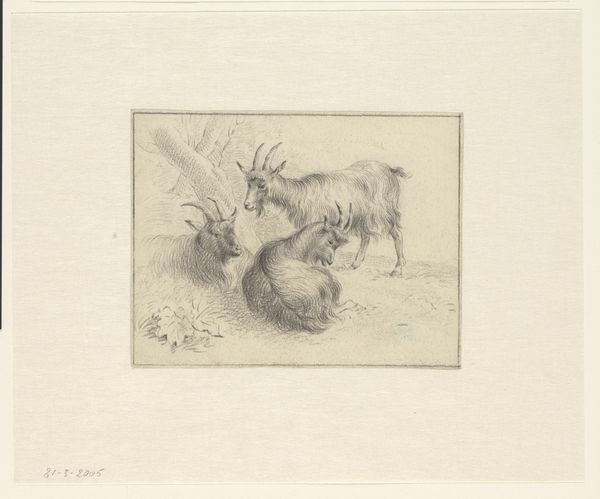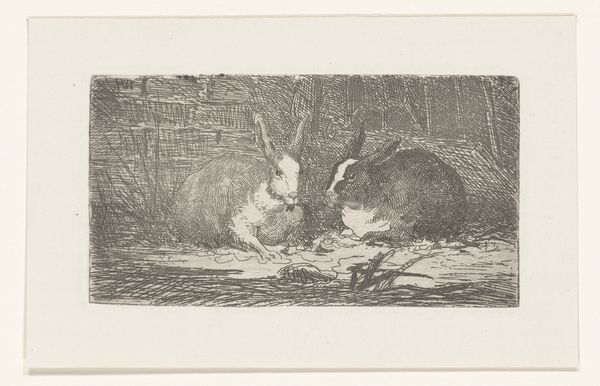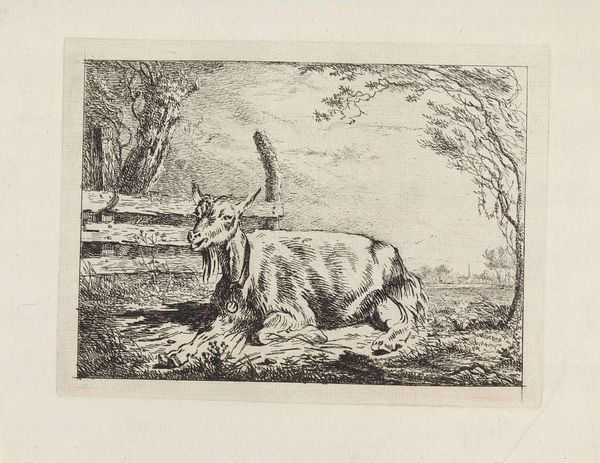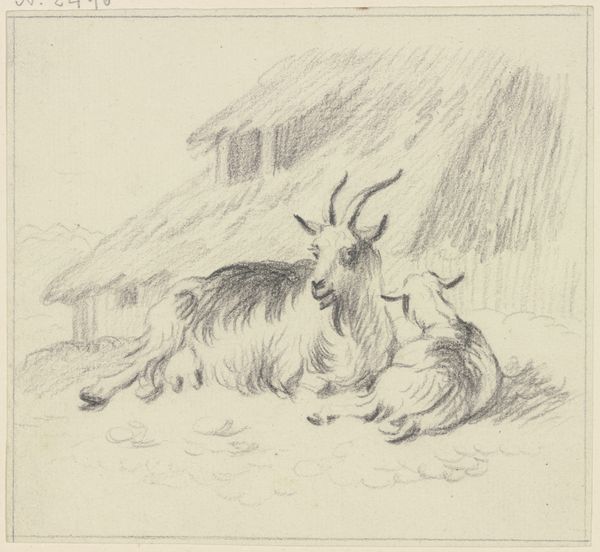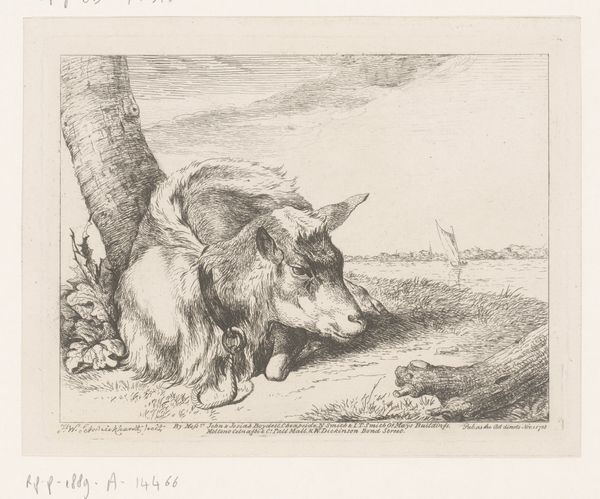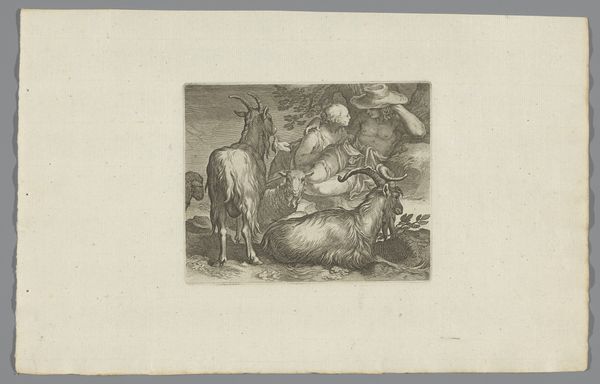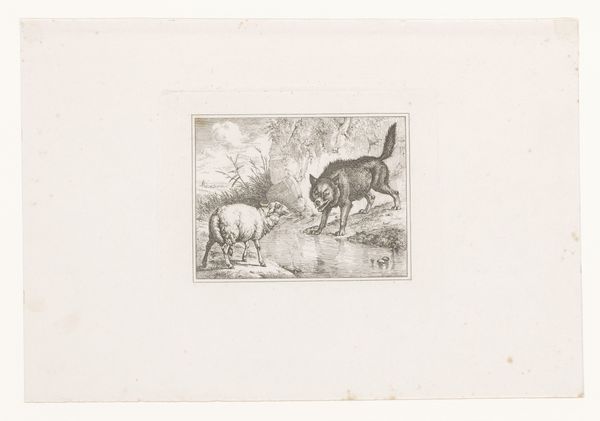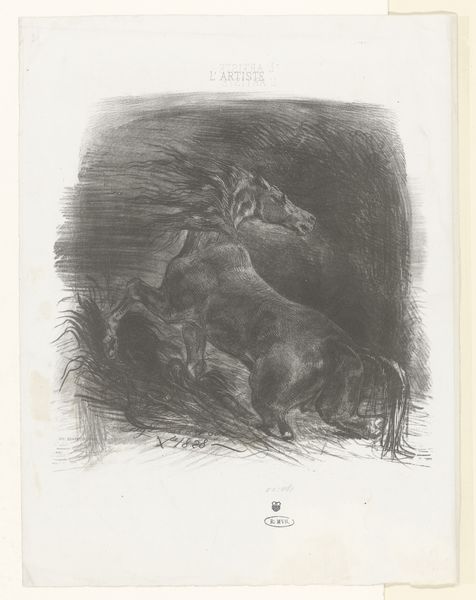
drawing, graphite
#
portrait
#
drawing
#
animal
#
landscape
#
pencil drawing
#
graphite
#
realism
Dimensions: height 225 mm, width 280 mm
Copyright: Rijks Museum: Open Domain
This tranquil landscape featuring a goat and its kid was likely made in the early 19th century by Pieter Bartholomeusz. Barbiers using a printmaking technique. Look closely, and you'll see it's not a straightforward etching or engraving. The image has a soft, almost painterly quality, achieved through a method called aquatint. This process involves applying a porous ground to a metal plate, then exposing it to acid. The acid bites around the grains of the ground, creating a textured surface that holds ink. It's a painstaking process, demanding skill and precision. Aquatint allowed artists like Barbiers to mimic the tonal range of watercolor drawings. It was popular among printmakers catering to a growing middle class, eager for affordable art. The scene itself evokes a sense of rural simplicity, a retreat from the industrialized world that was rapidly transforming the Netherlands at the time. Ultimately, this print invites us to consider the relationship between handcraft, mechanical reproduction, and the changing landscape of labor and leisure in the 19th century.
Comments
No comments
Be the first to comment and join the conversation on the ultimate creative platform.

